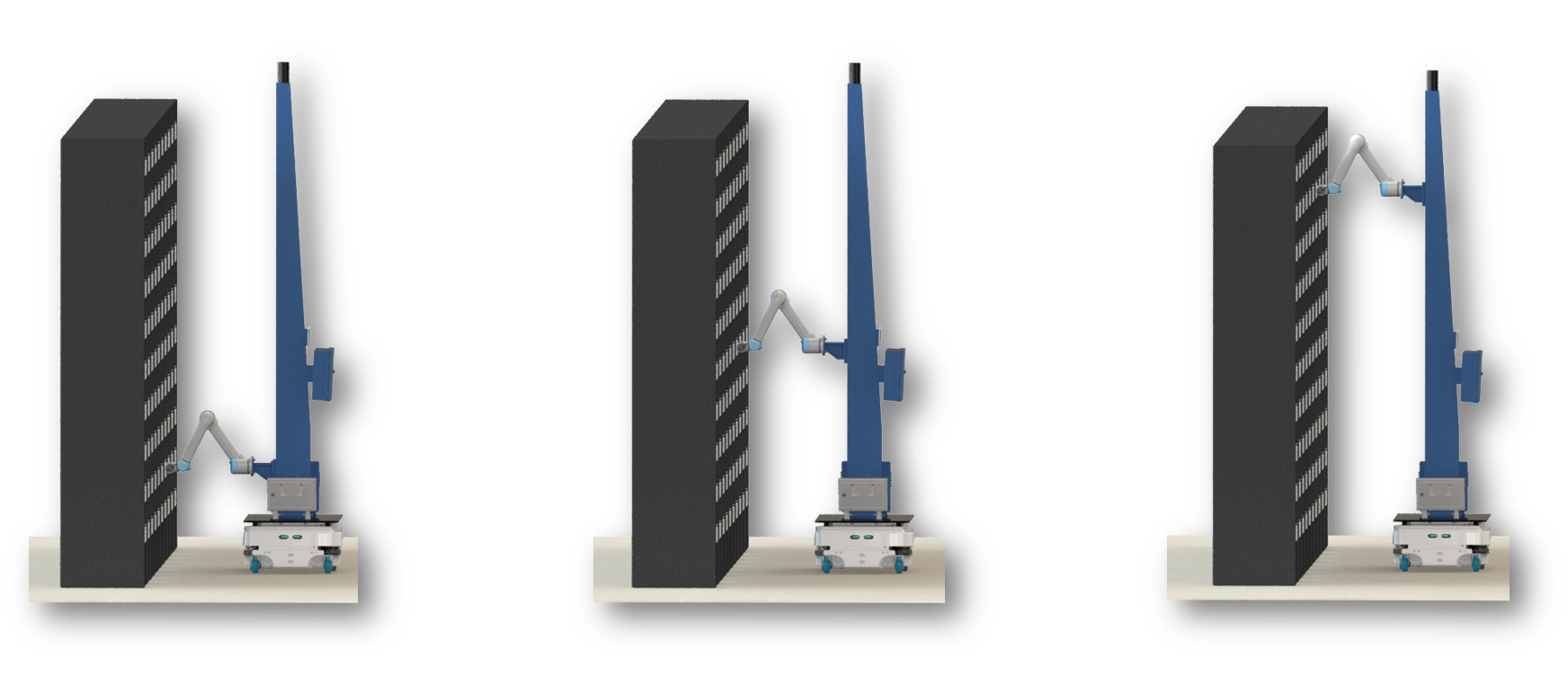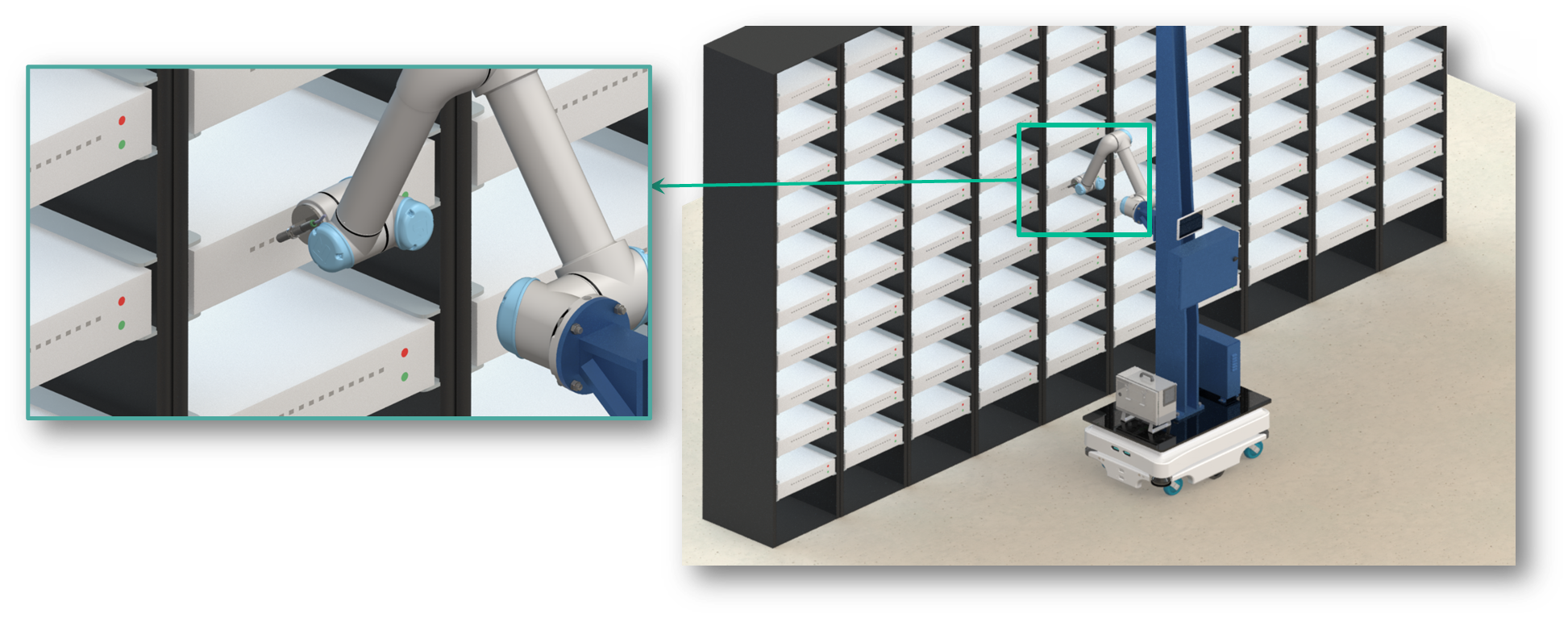Autonomous Mobile Robots (AMR) are robots that use different sensors and algorithms to make an appropriate decision while navigating through the environment. AMRs are upgraded versions of Automated Guided Vehicles that require an external track to guide their movement. But, in AMR it depends on the data from the sensors it has been equipped with. Both AMR and AGV have their features in terms of application. In this blog, we are specifically focusing on industrial AMR.
What is an Autonomous Mobile Robot (AMR)?
An Autonomous Mobile Robot (AMR) is a smart robot designed to move around and perform tasks without direct human control. These robots have cameras and other sensors to see and understand their surroundings and make decisions. This allows them to adapt to different environments and perform tasks efficiently. They also use advanced computer programs to make decisions while they navigate through complex environments. In other words, AMRs are smart robots designed to operate autonomously, using sensor data and algorithms to make real-time decisions and adapt to a dynamic environment.
AMR Hardware:
AMRs consist of a wheel and a suite of sensors, including LiDAR, RADAR, vision cameras, infrared cameras, and thermal cameras. The specific complement of sensors included in an AMR may vary depending on the application. However, the purpose of these sensors is to enable accurate and efficient navigation and obstacle avoidance in diverse environments. As such, the effective integration and utilization of these sensors are critical to the successful performance of AMRs in various applications.
AMR Software:
The software used for AMR is usually developed using Deep Learning (DL) or Deep Reinforcement Learning (DRL) techniques. These models are trained with data obtained from sensors, and based on this data, they are capable of making decisions while navigating through obstacles or environments. Programmers and Researchers develop new combinations of algorithms to extract maximum efficiency from these machines.
Advantages of using AMR
Enhanced Safety: AMR can be deployed in environments that are harmful to human beings. During the COVID scenario, the inevitable situation made us realize the important application of AMR in medical care. Also handling of toxic chemicals in chemical manufacturing units makes it easier to move chemicals where humans are subjected to potentially harmful chemicals. In industrial environments, it can navigate through all the hurdles.
Increased Flexibility: AMR can be deployed easily in different environments. It can be assigned to different sets of processes and operations that are too repetitive for human beings. Also, they can explore different environments and can navigate through them.
Improved Efficiency and Productivity: The implementation of AMR makes the production process more efficient, by optimizing the time for repetitive tasks and making fewer errors in execution. Also, these machines can run 24×7, improving productivity.
AMR in the Manufacturing Industry
AMR is now highly utilized in Industries for different operations and processes such as pick and place, loading and unloading, lifting, tow trucking, pallet trucking, and sorting. Autonomous mobile robots are quickly becoming a valuable part of manufacturing, warehouses, and logistics businesses because of their versatility and ease of integration into existing infrastructures. They can perform heavy- and light-duty tasks, deliver items to human employees, and carry out safety and security checks.
Other Applications
AMR can be applied to various fields such as Logistics, Medical Care, Banking Hospitality, Agriculture, and Aerospace. In medical care, attending and monitoring patients, and transporting medicines within the hospital AMRs can be deployed. Some of the logistics companies use AMR for delivery services. In consumer products, for vacuum cleaning, sentry and home assistant AMRs are used. AMR is used for monitoring and daily activities in agriculture. In the aerospace industry, AMR is used for exploration purposes to navigate into unknown terrain environments.
Success Story
AES developed an AMR for inspecting individual server temperatures. Here AMR is used to navigate through server racks while a collaborative robot(COBOT) is used to measure temperature with flexibility. A temperature display unit is available to show the measured temperature. The system could monitor the temperature across the floor and identify which systems might be affected. Fig 1 shows the ability of COBOT attached on top of AMR to move in an upward and downward direction, for inspecting individual servers in each rack. The temperature-measuring action is shown in Fig 2.

Fig 1 AMR server inspection robot for server room – Movement of COBOT

Fig 2 AMR server inspection robot for server room – Measuring Temperature
Conclusion
By understanding the intricacies of AMR robot technology, businesses can harness the full potential of these innovative machines. A thorough understanding of the challenges involved in integrating AMR robots into existing systems is essential. Such challenges include the development of custom software to facilitate communication between the AMRs and existing systems, as well as the allocation of financial resources to cover the cost of implementing these systems. In conclusion, AMR robots offer numerous advantages to businesses, but their successful integration requires a deep understanding of the technology behind them and the challenges involved. By mitigating these challenges, businesses can take full advantage of the benefits offered by AMR robots, remain competitive, and achieve sustainable growth. Stay tuned for our upcoming articles comparing AMR (Autonomous Mobile Robots) and AGV (Automated Guided Vehicles) for further insights into this exciting field!
Need help with AMR and Industrial automation? Reach out to us
We’re always here to help, Explore AES’s expertise in Industrial automation capabilities! Step into the future with AES – Your End-to-End, Industrial Automation Partner.

